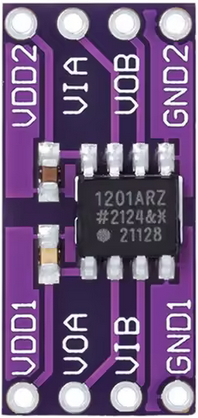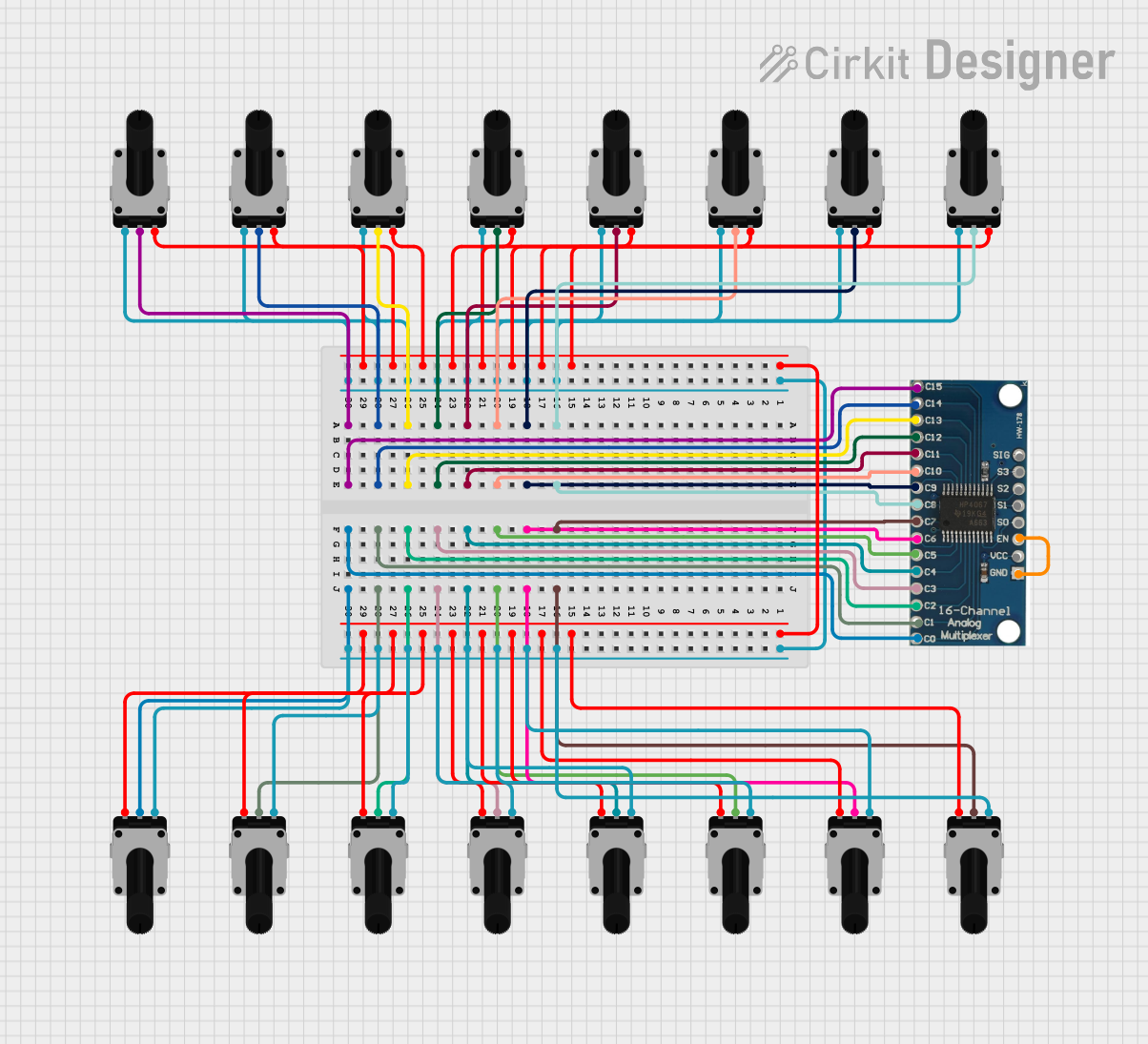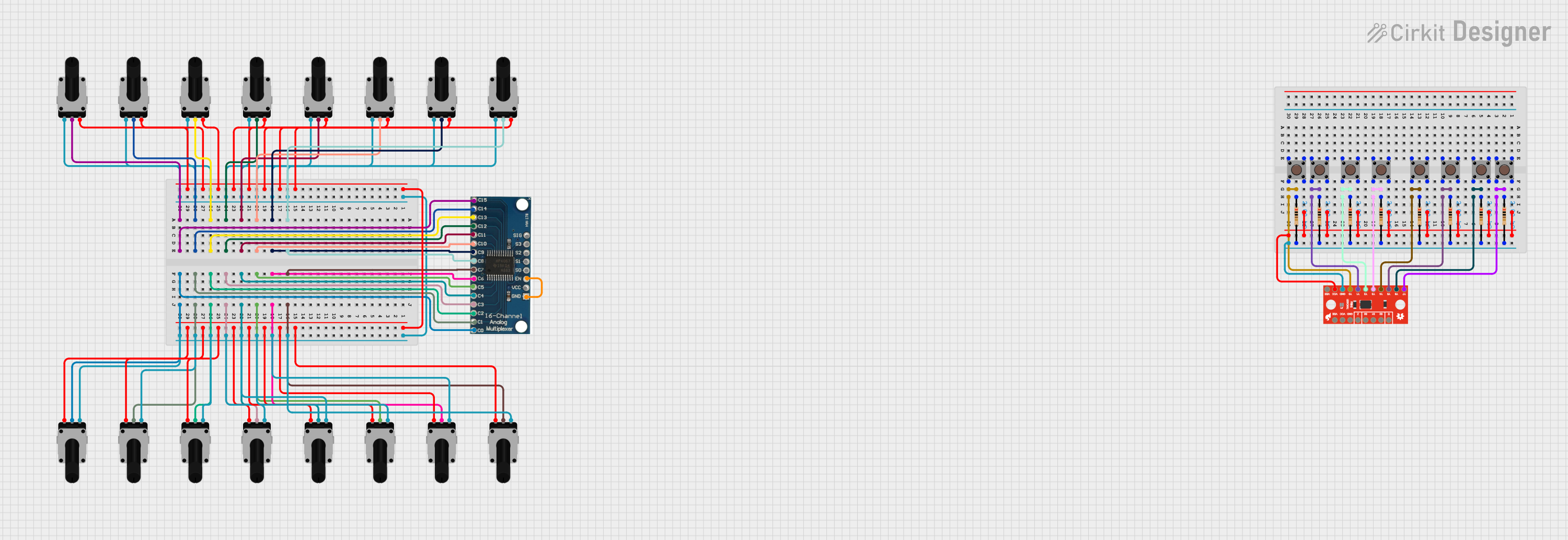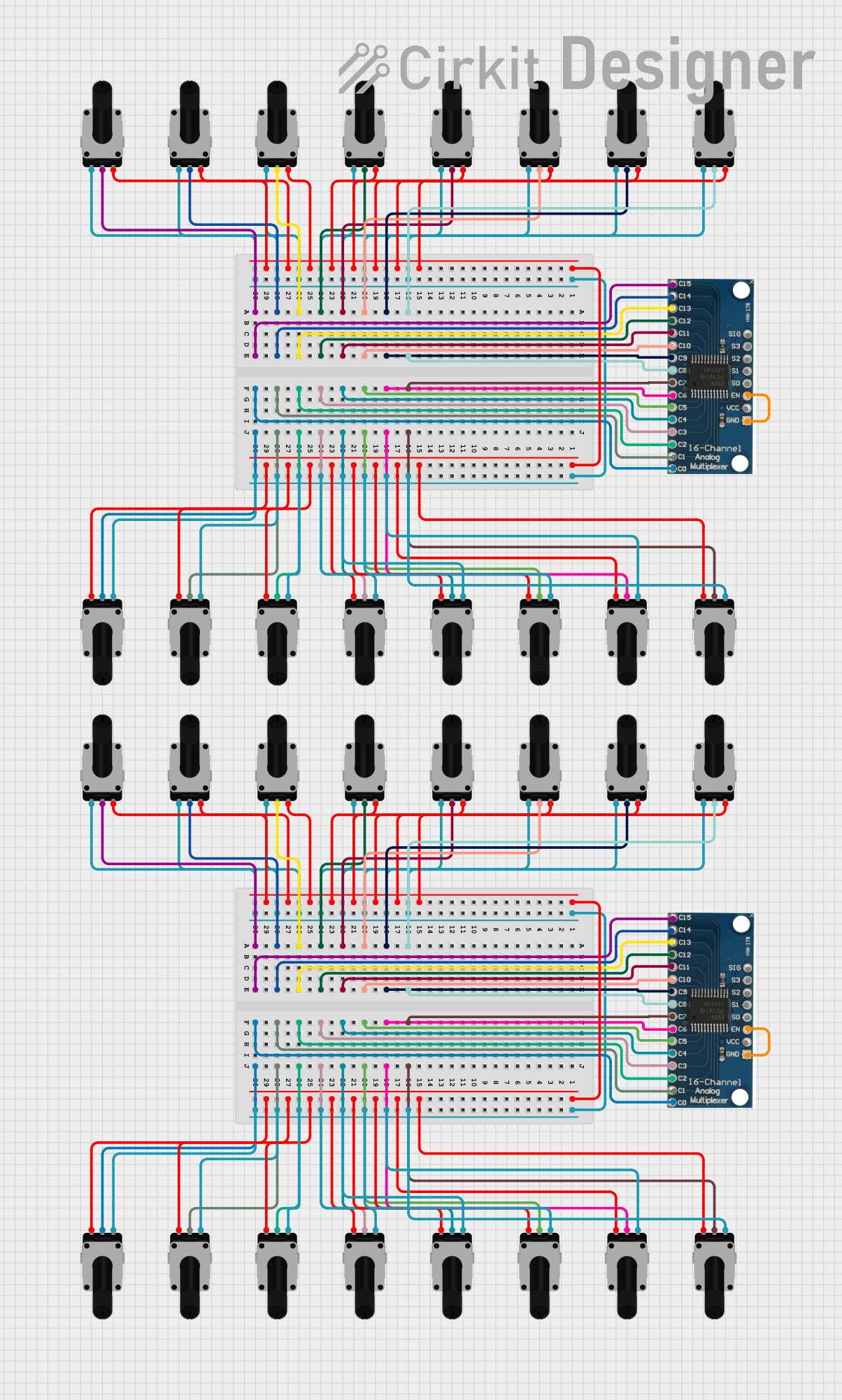
How to Use Dual-Channel Digital Isolator: Examples, Pinouts, and Specs

 Design with Dual-Channel Digital Isolator in Cirkit Designer
Design with Dual-Channel Digital Isolator in Cirkit DesignerIntroduction
The ADuM1201 is a dual-channel digital isolator manufactured by Analog Devices Inc. It provides electrical isolation between two circuits while enabling the transmission of digital signals. This isolation is achieved using iCoupler® technology, which employs magnetic coupling to ensure robust performance and high-speed operation. The ADuM1201 is ideal for applications requiring protection from high voltages, noise immunity, and signal integrity across isolated domains.
Explore Projects Built with Dual-Channel Digital Isolator

 Open Project in Cirkit Designer
Open Project in Cirkit Designer
 Open Project in Cirkit Designer
Open Project in Cirkit Designer
 Open Project in Cirkit Designer
Open Project in Cirkit Designer
 Open Project in Cirkit Designer
Open Project in Cirkit DesignerExplore Projects Built with Dual-Channel Digital Isolator

 Open Project in Cirkit Designer
Open Project in Cirkit Designer
 Open Project in Cirkit Designer
Open Project in Cirkit Designer
 Open Project in Cirkit Designer
Open Project in Cirkit Designer
 Open Project in Cirkit Designer
Open Project in Cirkit DesignerCommon Applications
- Microcontroller and sensor interface isolation
- Industrial automation and motor control
- Power supply and battery management systems
- Data communication in noisy environments
- Medical equipment requiring patient safety isolation
Technical Specifications
Key Specifications
| Parameter | Value |
|---|---|
| Isolation Voltage | 2.5 kV RMS |
| Data Rate | Up to 25 Mbps |
| Supply Voltage (VDD1/VDD2) | 2.7 V to 5.5 V |
| Propagation Delay | 45 ns (typical) |
| Common-Mode Transient Immunity (CMTI) | >25 kV/µs |
| Operating Temperature Range | -40°C to +125°C |
| Channels | 2 (1 forward, 1 reverse or 2 forward) |
| Package Options | 8-lead SOIC (narrow-body) |
Pin Configuration and Descriptions
The ADuM1201 is available in an 8-lead SOIC package. The pinout and descriptions are as follows:
| Pin Number | Pin Name | Description |
|---|---|---|
| 1 | VDD1 | Supply voltage for side 1 (2.7 V to 5.5 V) |
| 2 | GND1 | Ground for side 1 |
| 3 | IN1 | Digital input for channel 1 |
| 4 | IN2 | Digital input for channel 2 |
| 5 | OUT2 | Digital output for channel 2 |
| 6 | OUT1 | Digital output for channel 1 |
| 7 | GND2 | Ground for side 2 |
| 8 | VDD2 | Supply voltage for side 2 (2.7 V to 5.5 V) |
Usage Instructions
How to Use the ADuM1201 in a Circuit
- Power Supply: Connect VDD1 and VDD2 to separate power supplies (2.7 V to 5.5 V). Ensure that GND1 and GND2 are isolated from each other to maintain proper isolation.
- Signal Connections:
- Connect the digital input signals to IN1 and IN2.
- The corresponding isolated outputs will appear on OUT1 and OUT2.
- Bypass Capacitors: Place decoupling capacitors (e.g., 0.1 µF) close to VDD1 and VDD2 pins to reduce noise and ensure stable operation.
- PCB Layout: Maintain sufficient spacing between the isolated sides to prevent breakdown and ensure compliance with isolation standards.
Important Considerations
- Isolation Voltage: Do not exceed the rated isolation voltage of 2.5 kV RMS.
- Data Rate: Ensure the input signal frequency does not exceed the maximum data rate of 25 Mbps.
- Thermal Management: Operate within the specified temperature range (-40°C to +125°C) to avoid thermal stress.
- Signal Integrity: Use short and direct traces for input and output signals to minimize noise and signal degradation.
Example: Connecting to an Arduino UNO
The ADuM1201 can be used to isolate an Arduino UNO from a high-voltage circuit. Below is an example of how to connect and program the ADuM1201 for isolating a digital signal.
Circuit Diagram
- Connect VDD1 and GND1 to the Arduino's 5V and GND pins, respectively.
- Connect VDD2 and GND2 to the isolated circuit's power supply.
- Connect a digital output pin (e.g., D2) of the Arduino to IN1.
- OUT1 will provide the isolated signal to the high-voltage circuit.
Arduino Code
// Example code to toggle a digital signal through the ADuM1201
const int signalPin = 2; // Arduino pin connected to IN1 of ADuM1201
void setup() {
pinMode(signalPin, OUTPUT); // Set signalPin as an output
}
void loop() {
digitalWrite(signalPin, HIGH); // Send a HIGH signal
delay(1000); // Wait for 1 second
digitalWrite(signalPin, LOW); // Send a LOW signal
delay(1000); // Wait for 1 second
}
Troubleshooting and FAQs
Common Issues and Solutions
No Signal on Output Pins
- Cause: Missing or incorrect power supply connections.
- Solution: Verify that VDD1 and VDD2 are powered correctly and that GND1 and GND2 are isolated.
Signal Distortion or Noise
- Cause: Insufficient decoupling or long signal traces.
- Solution: Add bypass capacitors near the VDD pins and minimize trace lengths.
Exceeding Isolation Voltage
- Cause: High voltage spikes or improper grounding.
- Solution: Ensure the voltage across the isolation barrier does not exceed 2.5 kV RMS.
Overheating
- Cause: Operating outside the specified temperature range or excessive current draw.
- Solution: Check the operating conditions and ensure proper thermal management.
FAQs
Q1: Can the ADuM1201 handle bidirectional communication?
A1: No, the ADuM1201 is designed for unidirectional communication. For bidirectional communication, consider using other isolators with dedicated bidirectional channels.
Q2: What is the maximum distance between the isolated sides?
A2: The maximum distance is determined by the PCB layout and isolation standards. Ensure sufficient spacing to maintain the rated isolation voltage.
Q3: Can I use the ADuM1201 for analog signals?
A3: No, the ADuM1201 is designed for digital signals only. For isolating analog signals, consider using analog isolators.
Q4: Is the ADuM1201 suitable for medical applications?
A4: Yes, the ADuM1201 can be used in medical applications, provided it meets the required isolation and safety standards for the specific use case.